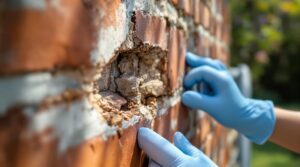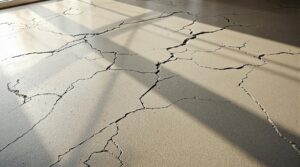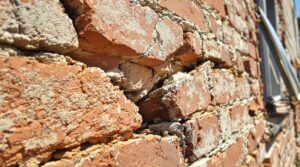Personal property coverage should typically range between 50-70% of a home's dwelling coverage limit. A thorough home inventory, including furniture, electronics, and valuables, helps determine the appropriate coverage amount. High-value items often require additional scheduled coverage due to standard policy sub-limits, such as jewelry theft coverage maxing at $1,500. Understanding the difference between actual cash value and replacement cost coverage can greatly impact claim settlements and future financial protection.
Key Takeaways
- Standard personal property coverage should be 50-70% of your dwelling coverage to protect furniture, electronics, and other belongings adequately.
- Create a detailed home inventory with photos and descriptions to accurately assess your belongings' total value for proper coverage.
- Choose replacement cost coverage over actual cash value for full compensation to replace damaged items without depreciation.
- Consider additional scheduled coverage for high-value items like jewelry, which typically have low sub-limits in standard policies.
- Review and adjust coverage annually or after major purchases, home improvements, or lifestyle changes to maintain sufficient protection.
Understanding the Basics of Personal Property Coverage
Nearly every homeowner needs to understand personal property coverage, a fundamental component of homeowners insurance that safeguards personal belongings against various risks.
Also known as Coverage C, this protection typically ranges from 50% to 70% of the dwelling coverage limit in a standard homeowners insurance policy, covering items such as furniture, electronics, and appliances.
A thorough personal property inventory is essential for determining appropriate coverage levels, as it helps homeowners accurately assess the total value of their possessions.
The coverage extends beyond the home, providing protection for off-premises losses up to 10% of the total personal property limit.
However, homeowners should be aware that standard policies often implement restrictions on high-value items like jewelry and artwork.
These items may require additional scheduled coverage to guarantee adequate protection.
Understanding these coverage components helps homeowners make informed decisions about their insurance needs and maintain appropriate protection levels for their belongings.
Calculating Your Personal Belongings' Total Value

Calculating the total value of personal belongings requires a systematic approach to confirm accurate coverage levels.
Creating a thorough home inventory enables homeowners to determine appropriate personal property coverage within their insurance policy. A standard two-bedroom home typically contains belongings valued around $70,000, though individual circumstances vary considerably.
To calculate personal property value accurately:
- Document each item through photographs and detailed descriptions
- Use a Personal Property Calculator to determine current replacement costs
- Review high-value items separately, as they may need additional coverage
- Update the inventory regularly to reflect new purchases or disposals
Insurance providers generally set personal property coverage between 50% to 70% of dwelling coverage limits.
This systematic evaluation helps confirm that coverage adequately protects the replacement cost of personal belongings. Maintaining detailed records and regularly reassessing value changes helps homeowners avoid coverage gaps and maintain appropriate insurance protection.
Special Limits and High-Value Items

Many standard homeowners insurance policies include restrictive sub-limits for valuable personal belongings, often capping coverage well below actual replacement costs. For instance, jewelry theft coverage typically maxes out at $1,500, which may be inadequate for protecting valuable collections or heirloom pieces.
To address these limitations, homeowners can enhance their personal property coverage through two primary methods.
Scheduled personal property coverage allows for itemized protection of specific high-value items at their full replacement value, particularly beneficial for unique pieces like fine art or collectibles.
Alternatively, blanket coverage provides increased limits for entire categories of valuables, streamlining insurance management without detailed itemization.
Before selecting additional coverage, obtaining a professional appraisal is essential for determining accurate values of expensive items.
Common categories requiring special limits consideration include electronics, firearms, jewelry, and furs, each typically subject to specific sub-limits in standard policies.
Actual Cash Value vs. Replacement Cost Coverage

Understanding the distinction between actual cash value and replacement cost coverage is essential when determining personal property coverage needs.
ACV policies compensate for depreciated value at the time of loss, while replacement cost coverage provides funds to replace items with new ones of similar quality, though it comes with higher premiums.
Homeowners must weigh the financial implications of each option, considering both the initial cost savings of ACV coverage against the long-term protection benefits of replacement cost coverage.
Coverage Type Key Differences
When choosing personal property coverage, homeowners face a critical decision between two distinctly different types of protection: Actual Cash Value (ACV) and Replacement Cost Coverage (RCC).
The key differences between these coverage types greatly impact claim amounts and financial protection:
- ACV reimburses the depreciated value of items at the time of loss, factoring in wear and tear.
- RCC provides funds to replace damaged items with new ones of similar quality, without depreciation deductions.
- Premium costs are higher for RCC but offer superior protection and peace of mind.
- High-value items experience greater coverage disparities between ACV and RCC due to rapid depreciation.
Understanding these coverage type differences helps homeowners make informed decisions about protecting their personal property investments, particularly when considering items that lose value quickly over time.
Cost vs. Protection Benefits
Comparing the costs and protection benefits between Actual Cash Value (ACV) and Replacement Cost Coverage (RCC) reveals a clear trade-off between immediate savings and thorough financial protection.
While ACV personal property coverage offers lower premiums, it only compensates for depreciated values, potentially leaving homeowners with significant out-of-pocket expenses when replacing valuable items.
Replacement cost coverage, though typically 10-20% more expensive, guarantees complete financial recovery by providing funds for new equivalent items.
For individuals with substantial personal property, this additional investment in property insurance covers the full replacement cost without depreciation deductions.
When evaluating coverage options, homeowners should weigh the long-term benefits of extensive protection and peace of mind against the higher upfront costs, particularly considering the current market prices of their belongings.
Making Your Coverage Choice
The decision between actual cash value and replacement cost coverage represents a fundamental choice in personal property protection.
When evaluating coverage options, homeowners must carefully assess their personal belongings and financial priorities to make an informed decision.
- Analyze the total value of personal belongings relative to home insurance policies' standard 50% dwelling coverage allocation.
- Compare premium costs between actual cash value vs replacement cost coverage with insurance companies.
- Consider the age and depreciation of valuable items when choosing between coverage options.
- Review and adjust personal property coverage annually to reflect new acquisitions or disposals.
While replacement cost coverage typically commands higher premiums, it provides extensive protection against loss by covering current market prices for new items, unlike actual cash value, which only compensates for depreciated worth.
Coverage Beyond Your Home's Walls

Most homeowners are relieved to discover that their personal property coverage extends far beyond their home's four walls. Typically, coverage follows belongings worldwide, protecting up to 10% of the total personal property limit for off-premises losses. This protection encompasses items such as luggage, electronics, and possessions stored in storage units.
For individuals who frequently travel or maintain belongings in multiple locations, worldwide coverage provides vital protection against theft or damage. However, understanding the limitations of this coverage is important for effective risk management. Significant exclusions apply, particularly for natural disasters like floods and earthquakes, which require separate policies. Additionally, intentional damage falls outside the scope of coverage.
To guarantee adequate protection for possessions both at home and abroad, homeowners should carefully review their policy limits and exclusions. This knowledge enables them to make informed decisions about supplemental coverage needs and maintain all-encompassing protection for their belongings.
Common Personal Property Coverage Exclusions

Understanding personal property coverage exclusions helps homeowners avoid costly surprises when filing claims. Personal property coverage has several common exclusions and limitations that consumers should know before purchasing insurance policies.
Standard personal property coverage typically excludes or limits protection in these key scenarios:
- Natural disasters like floods and earthquakes require separate, specialized insurance policies for coverage.
- High-value items such as jewelry, art, and collectibles are subject to sub-limits, often falling short of their actual worth.
- Tenant belongings require a separate renters insurance policy, as they are not covered under the property owner's insurance.
- Items damaged or stolen in unoccupied homes or properties under construction may be denied coverage.
Understanding these exclusions helps homeowners make informed decisions about additional coverage needs and prevents gaps in protection.
Some situations may require supplemental policies or riders to guarantee extensive coverage for valuable possessions.
Documenting Your Possessions for Insurance

Creating thorough digital records of personal belongings through photographs, videos, and detailed descriptions forms the foundation of an effective home inventory system.
Insurance professionals recommend documenting each item's value by researching current replacement costs through online retailers and local stores.
Maintaining organized digital records that are regularly updated, especially after acquiring valuable items, enables policyholders to determine appropriate coverage levels while streamlining potential future claims.
Digital Records Matter Most
When disaster strikes, digital documentation of personal belongings becomes an invaluable asset for insurance claims.
Creating and maintaining detailed digital records guarantees accurate coverage and streamlined claims processing. A thorough home inventory stored in cloud storage protects essential information from physical loss while enabling easy access when needed.
Essential steps for effective digital documentation include:
- Photograph each item and record brand, model, and serial numbers
- Document estimated replacement costs for accurate valuation
- Store records in secure cloud storage for protection and accessibility
- Review and update home inventory annually, especially after acquiring valuable items
This systematic approach to documenting items helps homeowners maintain appropriate insurance coverage levels and expedites the claims process during stressful situations.
Regular updates guarantee that coverage limits align with current possession values.
Value Each Item Carefully
The meticulous valuation of personal belongings forms the cornerstone of effective insurance coverage planning. To properly assess the total value of possessions, homeowners must document each item systematically, capturing detailed descriptions and current replacement costs. A thorough home inventory helps prevent undervaluing possessions, a common mistake that can lead to inadequate coverage.
| Category | Documentation Method | Key Details |
|---|---|---|
| Furniture | Photos & Description | Replacement Cost |
| Electronics | Serial Numbers & Photos | Purchase Date |
| Jewelry | Appraisals & Images | Market Value |
| Clothing | Group Photos | Total Value |
| Art & Collections | Individual Photos | Authentication |
Using a Personal Property Calculator provides accurate estimates for replacement values. Experts recommend regularly updating your inventory, particularly when acquiring valuable items, to maintain appropriate personal property coverage levels and guarantee extensive protection.
Adjusting Coverage as Your Needs Change

Life's constant changes require homeowners to regularly evaluate and adjust their personal property coverage to maintain adequate protection for their belongings. A thorough assessment of coverage limits should occur at least annually, with special attention paid to major life events that may necessitate adjustments to insurance protection.
To guarantee appropriate coverage levels, homeowners should:
- Maintain and update a home inventory annually, documenting new purchases and their replacement costs.
- Review coverage limits after significant home improvements or renovations.
- Evaluate insurance needs when moving to a larger living space or starting a home-based business.
- Consult with an insurance advisor about additional endorsements for valuable items.
Regular monitoring of personal property values and lifestyle changes helps prevent coverage gaps.
Whether acquiring new possessions, experiencing family changes, or upgrading living spaces, maintaining current insurance protection safeguards against potential losses and provides peace of mind.
The Benefits Of Consulting A Public Adjuster

Consulting a public adjuster can greatly enhance the outcome of personal property claims through their specialized expertise in policy interpretation and claims assessment.
Public adjusters provide unbiased damage evaluations and handle all aspects of the claims process, from documentation to negotiation, allowing policyholders to focus on recovery.
Studies indicate that claims managed by public adjusters often result in considerably higher settlements, with some cases showing up to 800% greater compensation compared to claims filed without professional assistance.
Expertise In Insurance Claims
Professional guidance from a public adjuster can transform the complex process of filing an insurance claim into a more manageable and potentially lucrative endeavor. Their expertise in personal property coverage and insurance policies guarantees that policyholders receive full benefits under their coverage limits.
Public adjusters offer significant advantages through:
- Expert assessment of damages and thorough documentation of losses, leading to more accurate claims
- In-depth knowledge of insurance policies, including coverage limits and exclusions
- Direct negotiation with insurance companies, streamlining the claims process
- Expedited settlements through professional handling and avoidance of common pitfalls
While public adjusters charge between 5% and 15% of the final settlement, their expertise often results in substantially higher compensation that justifies their fee, making them valuable partners in claims resolution.
Objective Damage Assessment
When homeowners face property damage, an independent evaluation from a public adjuster can provide essential objectivity in evaluating losses and determining fair compensation.
These professionals bring extensive knowledge of personal property insurance and industry standards to assess damage or loss following a covered event.
Public adjusters systematically review insurance policies to identify all covered items, ensuring nothing is overlooked during the claims process. Their objective assessment typically results in claim payouts that are 20-30% higher than those handled without professional assistance.
Working on a contingency basis, they are motivated to secure maximum compensation for their clients. Their expertise not only helps streamline the claims process but also relieves homeowners of the burden of negotiating directly with insurance companies, providing peace of mind during an already stressful situation.
Streamlined Claim Process
Most insurance claims benefit greatly from the expertise of a public adjuster, who transforms a potentially complex process into a streamlined experience for policyholders.
When determining personal property coverage needs, professional guidance guarantees peak protection and efficient claim resolution.
Public adjusters deliver significant advantages throughout the claims process:
- Maximize claim payouts by securing settlements 20-30% higher than self-managed claims
- Identify additional coverage options within policies, including loss of use coverage that policyholders might overlook
- Manage all communications with the insurance company, reducing stress and administrative burden
- Provide thorough damage assessment and documentation, strengthening the claim's validity
This expert assistance proves particularly valuable when traversing complex personal property coverage claims, ensuring policyholders receive fair compensation while maintaining focus on recovery.
Higher Claim Payouts & Settlements
Statistical evidence consistently demonstrates that engaging a public adjuster leads to considerably higher insurance claim settlements, with policyholders receiving 20% to 50% more compensation compared to those who handle claims independently.
Public adjusters achieve these higher claim payouts through their expertise in identifying and documenting all eligible damages, ensuring nothing is overlooked during the claims process.
Working on a contingency fee basis, public adjusters are inherently motivated to maximize the claim amount for homeowners.
Their thorough understanding of policy language and valuation methods not only results in larger settlements but also expedites the recovery process.
Many adjusters successfully accelerate claims resolution by weeks or months, allowing homeowners to recover more quickly while securing the compensation they deserve without the stress of maneuvering complex insurance procedures themselves.
About The Public Claims Adjusters Network (PCAN)

The Public Claims Adjusters Network (PCAN) represents a nationwide coalition of rigorously vetted, state-licensed public adjusters who assist policyholders with residential and commercial property damage claims.
As a trusted resource for insurance claims assistance, PCAN maintains strict standards for its member adjusters through thorough vetting and annual audits.
The network's commitment to excellence is demonstrated through:
- Coverage across 40+ states, handling over 30 different types of property damage claims
- Intensive application and interview process for all member adjusters
- Mandatory yearly audits of licenses and complaint records
- Adherence to the highest standards of ethics and professionalism
PCAN serves as an essential connection point between policyholders seeking expert assistance and top-tier public adjusters.
This network guarantees that property owners have access to qualified professionals who can effectively manage their home insurance claims and maximize their personal property coverage benefits.
Frequently Asked Questions
What Is a Typical Amount of Personal Property Coverage?
For a $400,000 home, typical policies provide personal property coverage between $200,000-$280,000, while renters generally start at $20,000. Coverage limits vary based on property types and regional differences.
How to Estimate the Value of Personal Belongings?
Create a detailed personal inventory checklist, document items room by room, photograph valuables, research current electronics replacement costs, and consider professional appraisals for jewelry and high-value items.
What Is the 80% Rule in Property Insurance?
The 80% rule in property insurance requires homeowners to insure their property for at least 80% of replacement cost to avoid co-insurance penalties when filing claims for covered losses.
What Is a Good Amount of Personal Liability Coverage?
Insurance experts recommend liability coverage limits between $100,000-$500,000, with additional umbrella policy benefits of $1 million, based on personal asset levels, risk assessment strategies, and potential property damage claims.








